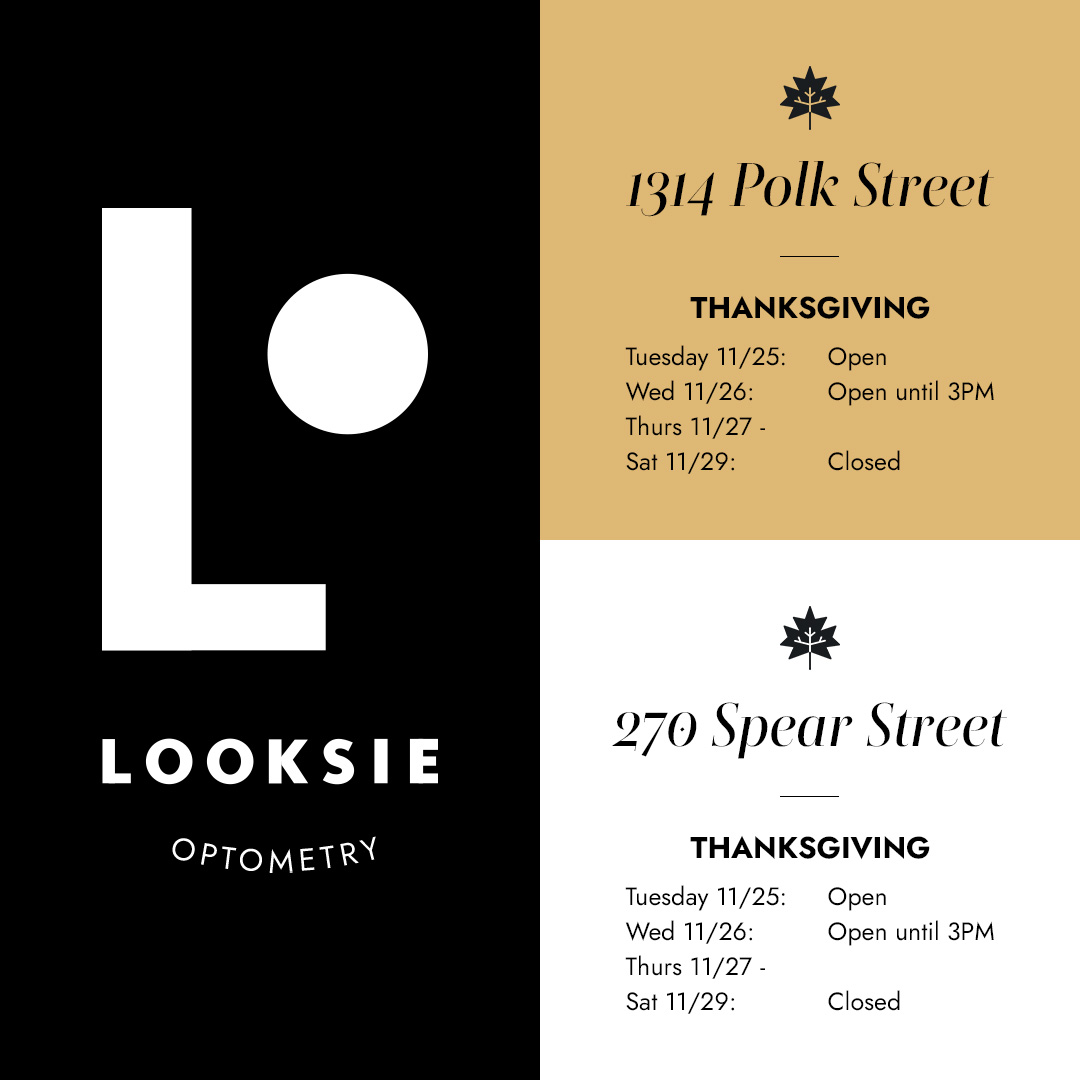Eye Care Services in San Francisco.
Looksie Optometry offers comprehensive eye care and optical services:
Comprehensive Eye Exam
We recommend getting consistent, annual eye exams to ensure all aspects of vision and eye health. This includes:
- Internal Exam – An evaluation of the retina and optic nerve while your eyes are dilated.
- Visual Function and Eye Health – Testing depth perception, color vision, peripheral vision and response of the pupils to light, as well as an evaluation of eye focusing, eye teaming and eye movement abilities.
- Glaucoma Testing – Test of fluid pressure within your eyes to check for the possibility of glaucoma.
- Visual Acuity – Testing your vision with different lenses to determine if glasses or contact lenses can improve your vision.
Contact Lens Exam
Patients who wear or would like to wear contacts need to undergo a contact lens exam in addition to their comprehensive eye exam. The first contact lens test will measure the eye’s surface to determine what size and type of contacts are best for the patient. Our doctors also may do a tear film assessment to ensure you have adequate tears to comfortably wear contacts.
Dry Eye Treatment
The understanding of dry eye will help you determine the best treatment option. Dry eye occurs when a person doesn't have enough quality tears to lubricate and nourish the eye. Symptoms of dry eye can include a stinging, burning, or scratchy feeling; red or watery eyes; blurred vision; light sensitivity; or difficulty driving at night. It’s a common and often chronic problem, especially in older adults.
For those with moderate to severe dry eyes, Looksie can conduct a comprehensive dry eye evaluation that can be covered by medical insurance.
If you are found to be a candidate, Looksie offers state-of-the-art Intense Pulsed Light (IPL) and Radiofrequency (RF) therapies that can significantly improve dry eye symptoms over a longer term.
Learn more about IPL and RF treatments at Looksie
Eye Emergencies
Eye emergencies cover a range of incidents and conditions such as; trauma, cuts, scratches, foreign objects in the eye, burns, chemical exposure, photic retinopathy, blunt injuries to the eye or eyelid. Serious complications can occur from an eye injury without proper treatment.
In the case of eye injury, be sure NOT to:
- Rub or apply pressure to your eye
- Try to remove foreign objects that are stuck in any part of your eye
- Use tweezers or any other tools in your eye (cotton swabs can be used, but only on the eyelid)
- Put medications or ointments in the eye
For contact lenses wearers, attempting to remove your contacts can make the injury worse.
Looksie’s doctors are often available for same-day appointments to address eye emergencies. If you require immediate assistance or have a life-threatening injury, go to your nearest emergency room or call 911.
LASIK Procedure
If you are looking to reduce or eliminate your need for glasses or contact lenses, LASIK laser eye surgery may be a good option for you.
Looksie’s optometrist can conduct an evaluation of your medical and ocular history to determine if you’re a good candidate for the procedure. We have a network of trusted eye surgeons and can provide a referral that’s right for you.
Eye Allergies
If you have red, itchy, or watery eyes, along with sneezing and a runny nose, you may be suffering from eye allergies. We can help patients find relief by prescribing special eye drops or changing the type of contact lens prescribed, since lenses are more susceptible to accumulating allergens.
Pediatric Eye Exams
About 35% of American preschoolers have nearsightedness, farsightedness, or astigmatism, and other common vision problems in young children include lazy eye, misalignment of eyes, color blindness, depth perception disorders, and anterior eyelid health.
Eye exams for children are crucial to their overall health. Vision problems can often interfere with school performance and even impact a child’s safety. Looksie optometrists are trained to work with children and adolescents, and can provide exams for the whole family.
Want to learn more about our optometry services? Call to schedule a consultation today.
Insurance
We Accept The Following Insurance:
We are an eye care provider for many insurance plans. If your insurance is not on our current list, please don’t hesitate to email us and we will help you clarify your insurance eligibility and benefits.
Payment Options
We accept all major Credit Cards:























